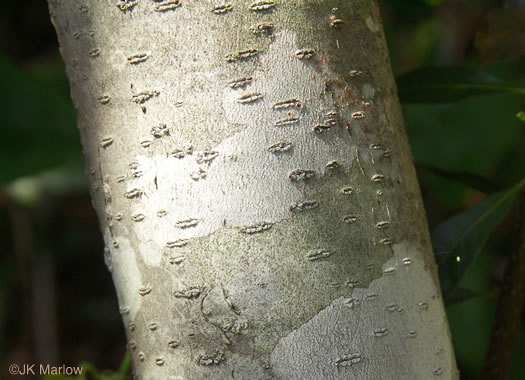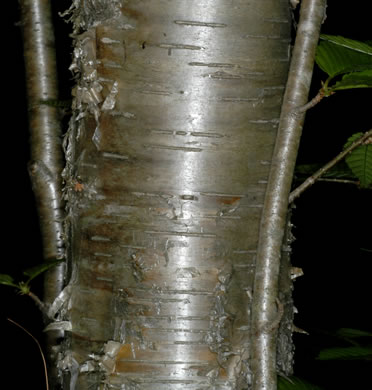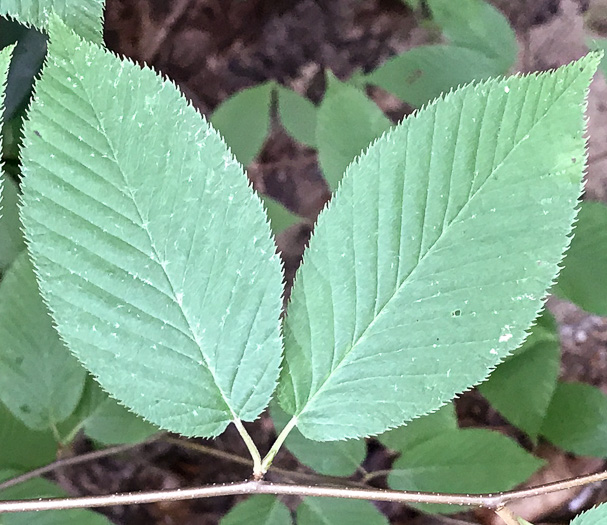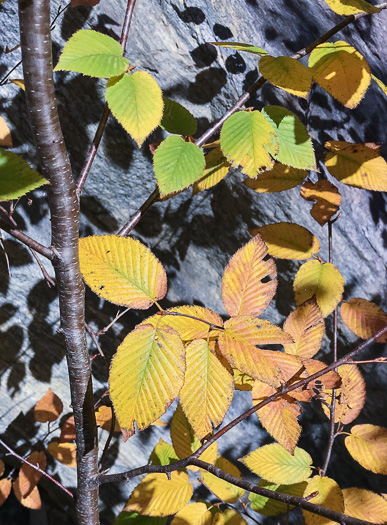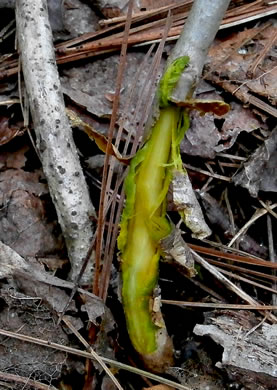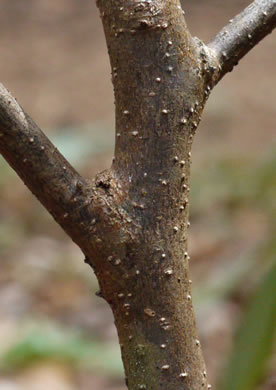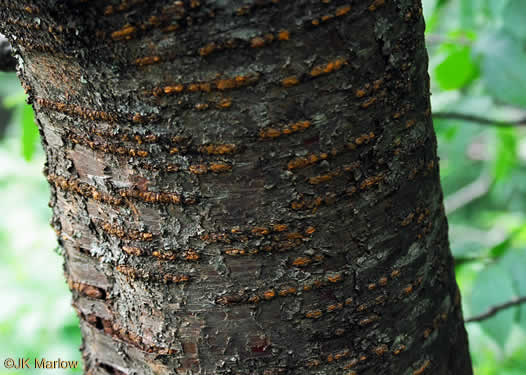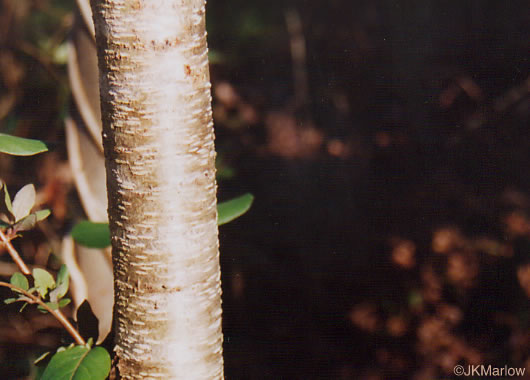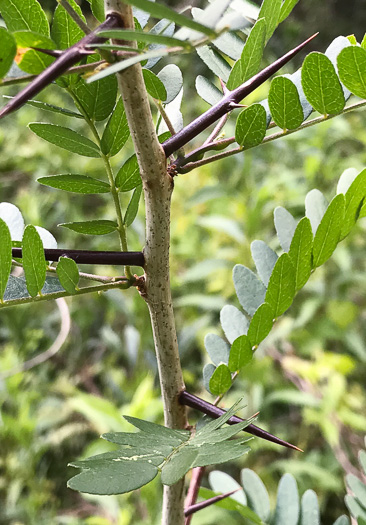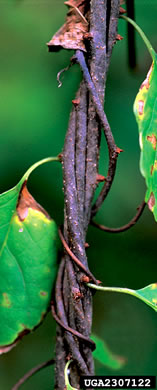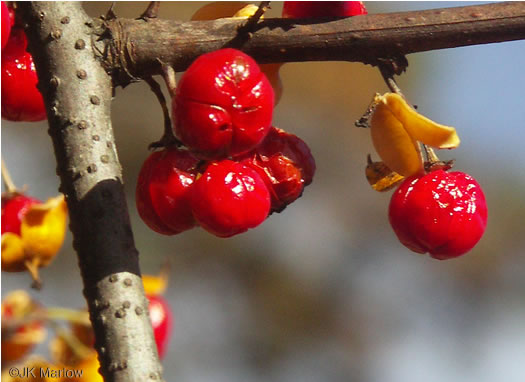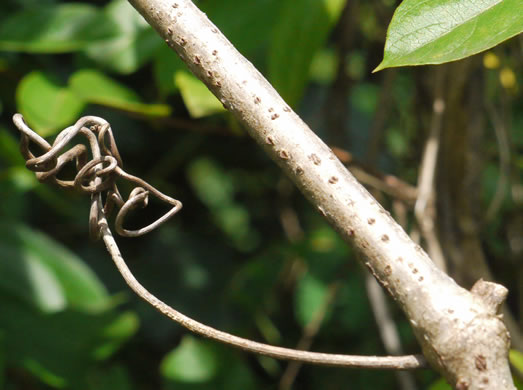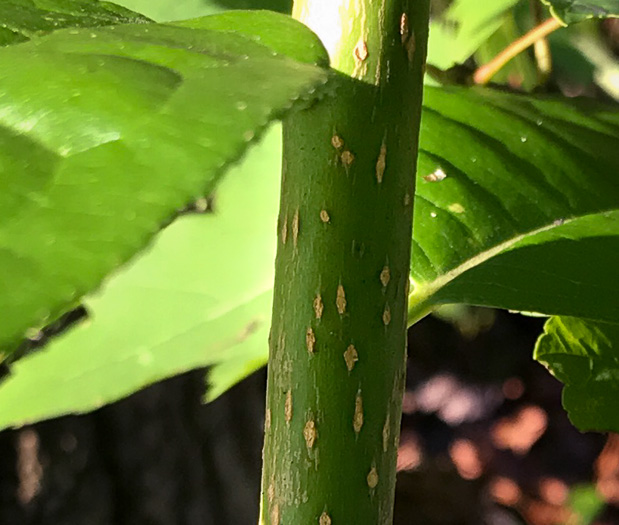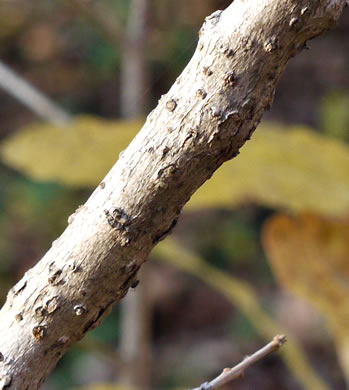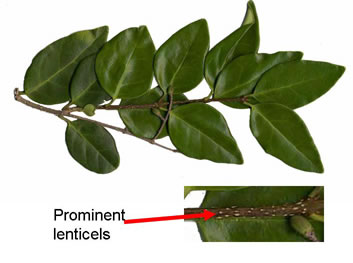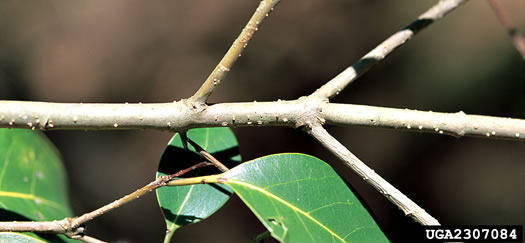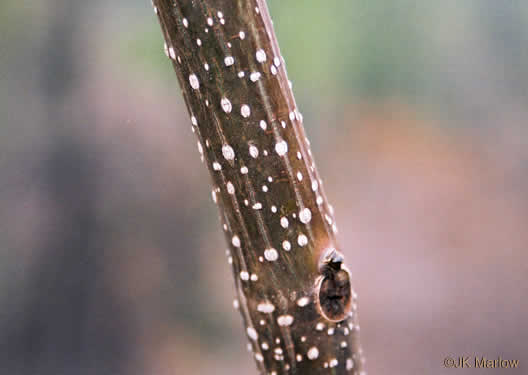Your search found 19 image(s) illustrating the term "lenticel." For a written explanation, click on "lenticel" in the Glossary.
To see larger pictures, click or hover over the thumbnails.
To go to the plant's detail page, click its name.
 Common Wax-myrtle,
Morella cerifera
Common Wax-myrtle,
Morella cerifera
Bark whitish to gray, thin, smooth, with conspicous horizontal lenticels, per Native Trees of the Southeast, An Identification Guide (Kirkman, Brown, & Leopold, 2007).
 Yellow Birch,
Betula alleghaniensis
Yellow Birch,
Betula alleghaniensis
Bark silvery-gray or shiny yellow, horizontal elongated lenticels, peeling, per Woody Plants of the Blue Ridge (Lance).
 Sweet Birch,
Betula lenta var. lenta
Sweet Birch,
Betula lenta var. lenta
Scraped twigs aromatic; lenticels on twigs not raised or rough to touch, per Woody Plants of the Southeastern US: A Winter Guide (Lance, 2004).
 Sweet Birch,
Betula lenta var. lenta
Sweet Birch,
Betula lenta var. lenta
Prominent horizontal lenticels on the bark of young trees, per Native Trees of the Southeast, An Identification Guide (Kirkman, Brown, & Leopold, 2007).
 American Chestnut,
Castanea dentata
American Chestnut,
Castanea dentata
Twigs gray to shiny chestnut brown, glabrous, with numerous white lenticels, per Native Trees of the Southeast, An Identification Guide (Kirkman, Brown, & Leopold, 2007).
 Yellowroot,
Xanthorhiza simplicissima
Yellowroot,
Xanthorhiza simplicissima
Twigs moderately stout, lenticellate, with bright yellow inner bark, per Woody Plants of the Southeastern US: A Winter Guide (Lance, 2004).
 Northern Spicebush,
Lindera benzoin
Northern Spicebush,
Lindera benzoin
Bark thin, dark, smooth but with raised, conspicuous lenticels, per Woody Plants of the Southeastern US: A Winter Guide (Lance, 2004).
 Fire Cherry,
Prunus pensylvanica
Fire Cherry,
Prunus pensylvanica
Orange lenticels, per Trees of the Southeastern United States (Duncan & Duncan, 1988).
 Black Cherry,
Prunus serotina var. serotina
Black Cherry,
Prunus serotina var. serotina
Lenticels horizontal and conspicuous when the tree is young, per Native Trees of the Southeast, An Identification Guide (Kirkman, Brown, & Leopold, 2007).
 Honey Locust,
Gleditsia triacanthos
Honey Locust,
Gleditsia triacanthos
Young bark thin, dark, with prominent raised lenticels, per Woody Plants of the Southeastern US: A Winter Guide (Lance, 2004).
 Oriental Bittersweet,
Celastrus orbiculatus
Oriental Bittersweet,
Celastrus orbiculatus
The tan lenticels look like little dashes on the brown twigs and branches, per Invasive Plants, Guide to Identification, Impacts and Control (Kaufman & Kaufman, 2007).
 Oriental Bittersweet,
Celastrus orbiculatus
Oriental Bittersweet,
Celastrus orbiculatus
Lenticels conspicuous, per Woody Plants of the Southeastern US: A Winter Guide (Lance, 2004).
 Porcelain-berry,
Ampelopsis glandulosa
Porcelain-berry,
Ampelopsis glandulosa
Raised dots (lenticels) become corky and reddish, per A Field Guide for the Identification of Invasive Plants in Southern Forests (Miller, Chambliss, & Lowenstein, 2010).
 Sourwood,
Oxydendrum arboreum
Sourwood,
Oxydendrum arboreum
Young twigs eventually with relatively conspicuous, vertically lenticular lenticels, per Trees, Shrubs, and Woody Vines of Northern Florida and Adjacent Georgia and Alabama (Godfrey, 1988).
 Fringetree,
Chionanthus virginicus
Fringetree,
Chionanthus virginicus
Bark is gray, mostly smooth, but marked by numerous raised lenticels, per Woody Plants of the Blue Ridge (Lance).
 Japanese Privet,
Ligustrum japonicum
Japanese Privet,
Ligustrum japonicum
Note the prominent lenticels on twigs. — Clemson Extension
 Glossy Privet,
Ligustrum lucidum
Glossy Privet,
Ligustrum lucidum
Branches brownish-gray with raised light dots (lenticels), per Forest Plants of the Southeast and Their Wildlife Uses (Miller & Miller, 2005).
 Princess Tree,
Paulownia tomentosa
Princess Tree,
Paulownia tomentosa
Lenticels large, pale, and numerous, per Trees of the Southeastern United States (Duncan & Duncan, 1988).
 Rusty Blackhaw,
Viburnum rufidulum
Rusty Blackhaw,
Viburnum rufidulum
Twigs grayish, lenticellate, per Woody Plants of the Southeastern US: A Winter Guide (Lance, 2004).

